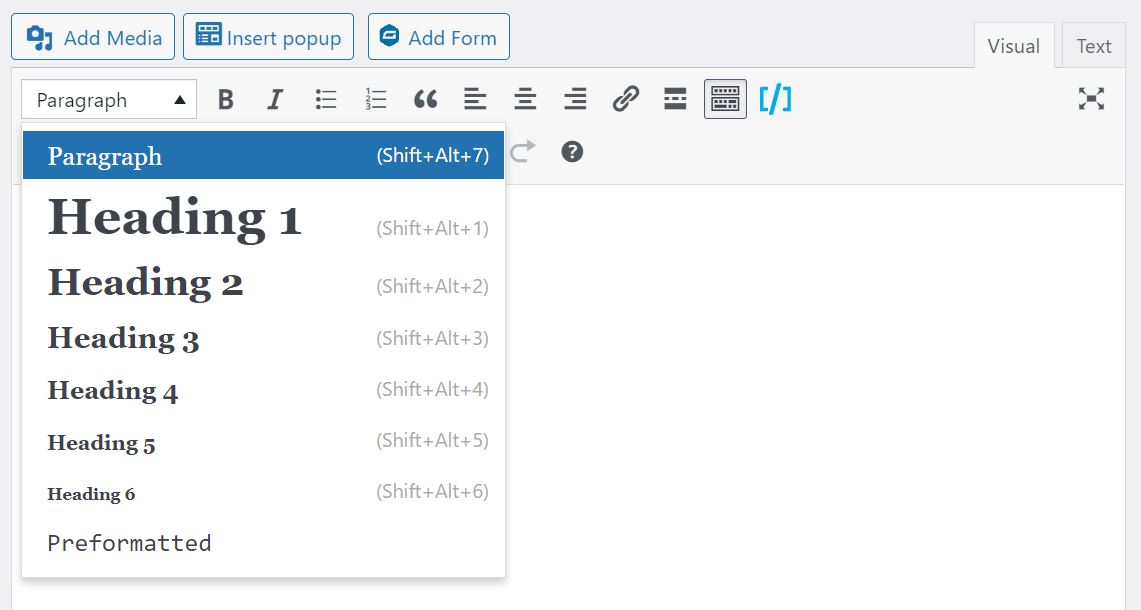Easily Optimize Your School’s Website With These SEO Tips
By now, you probably already understand that in order to optimize your school’s website for search engines, you’ll need to implement some SEO tactics to help get you onto Google’s first page. But, understanding what changes you can make—and how to apply them to boost your ranking—can be a different story.
If you’ve been wanting to strengthen your website’s raking, but aren’t quite sure where to start, we’re here to help with 3 easy steps!
Why SEO is Important for Your School’s Website
Before we dive right into the steps you can take to strengthen your school’s ranking, let’s first highlight why SEO is important.
With the rise of international schools—especially in Asia—the need to appear on Google’s first page is very important. In order to rise above your competitors to the top of the search results, it’s crucial that your website is optimized with SEO tactics. How can you show-off your school if your website doesn’t surface when parents are searching?
If your goal is to increase school registrations, stay competitive in the ever-changing international school industry, and clearly communicate why you’re the number one choice, SEO should be an essential component of your marketing strategy.
Are you ready to find out how you can quickly optimize your site with simple but effective strategies today? Read on to discover some easy-to-apply methods!
3 Ways to Effortlessly Optimize Your School’s Website
While SEO can be quite a complex and technical topic, it doesn’t have to be. If you focus on a few strategies and steps like the ones we’re about to go over, you can positively impact your search ranking. You can drastically improve search results and increase your school’s enrollments by thinking like a parent, updating your page headings, and keeping your content fresh and relevant.
#1 Always Think Like A Parent When Creating Content
Your website is the window to your school. It shows your value perspective, successes, and your culture. Are you utilizing it to effectively showcase your school’s value and edge? One way you can make sure that you are emphasizing why your school should be the top choice is to remind yourself to always think like a prospective parent. This is one of the most important aspects when it comes to effective school marketing—and especially your website.
You’ve no doubt heard of the importance of keywords in reference to SEO. When it comes to finding a great school for their child, parents will search for short, or long, phrases in Google—or other search engines—that will reveal matches that are the most suitable to what they’re looking for. By adding specific phrases or language to your school’s website that parents are most likely typing in, search engines will view your pages as a good option and will list your site to the searcher.
Let’s take a look at a specific example. Suppose you’re a parent in Bangkok—or are moving to Bangkok soon—and are looking to enroll your child at a top international school. If you go to Google, what would be something you’d type in? Maybe phrases like, “top international schools in Bangkok” or, “best schools in Bangkok” would be a couple of your first queries to find out what your options are. This is why, as a school marketer, you should focus on creating content around key phrases or keywords that a parent would be searching for. Including these types of keywords to your homepage, or other pages, will help boost your site to the top of search results.
If you were to create a post entitled “tips for choosing the best international school in Bangkok”, where you outlined factors that parents should consider, you’d likely bring more traffic to your school’s website and increase the probability of appearing on Google’s first page for that specific phrase.

#2 Update Your Pages With Headings & Subheadings
Another straightforward way to optimize your school’s website is to make sure you’re using the correct headings and subheadings when writing content. Using headings helps keep your pages organized and provides your audience with lots of value.
I like to think of the use of headings and subheadings like a book. For example, your H1 heading would be similar to a book’s title. It’s the main purpose of your piece of content. From there, H2 subheadings are like chapters within a book. I then view H3 and H4 subheadings as ‘subchapters’.
Using headings and subheadings (H1, H2s, H3s, etc.) are great for SEO purposes, because they help keep your content organized, give your reader a clear understanding of what will be covered in each section, and provides you with opportunities to include the keywords you are trying to rank for on.
Let’s take a look at this post so you can really grasp how to use headings and subheadings to optimize your school’s website. Once you understand them, you can start executing.
Here’s how I’ve structured things for this article:
H1: Easily Optimize Your School’s Website With These SEO Tips (main title containing the most important/relevant keywords).
H2: Why SEO is Important for Your School’s Website (this is the first ‘chapter’ that relates the title).
H2: 3 Ways to Effortlessly Optimize Your School’s Website (another ‘chapter’ that relates to the title).
H3: #1 Always Think Like A Parent When Creating Content (the first ‘subchapter’ of the above H2).
H3: #2 Update Your Pages With Headings & Subheadings (another ‘subchapter’ that relates back to the above H2).
H3: #3 Keep Your Content Fresh With Changes and Revisions (another ‘subchapter’ that relates to the last H2).
H4: Fix Mistakes & Add Content (this is a subheading of the H3 above ‘keep your content fresh with changes and revisions’).
H4: Update or Add Images (another subheading that still relates to the H3 above ‘keep your content fresh with changes and revisions’).
H4: Repair or Delete Broken Links (the last subheading that still relates to the H3 above ‘keep your content fresh with changes and revisions’).
H2: Moving Forward Moving Forward To Successfully Optimize Your School’s Website (the last “chapter” that relates to the title).
I also prefer to write out my articles in Word or Google Documents first and then import them to WordPress once they’re ready to be published on our website. When your content is organized on your site’s back-end, highlight the text you want to change to an H1, H2, H3, etc. (see photo) and select the proper heading—it’s that easy!

Using headings is not only great for SEO and organization, it’s also an excellent way to grab your audience’s attention with aesthetically pleasing structure.
The nice thing about this SEO tactic is that it’s extremely easy to implement. You can start by going through your current website pages and checking to make sure they all have an H1 title that contains keywords about that page’s content, and then add H2’s as ‘chapters’, H3’s as ‘subchapters’ and so on.
If you’d like to read more about the use of headings, you can check out this post by Yoast.
#3 Keep Your Content Fresh With Changes and Revisions
As a previous international school marketing manager, I understand how easy it can be to let your school’s website fall to the wayside. With so many other tasks like internal communication updates, events to plan, or school tours to host, your website can get left behind.
If you had big plans to create new and exciting blog posts and just haven’t had the chance, you can still optimize your school’s website without having to constantly create new posts. Of course, creating new, relevant content is always the best option, simply updating older pages or posts can strengthen your ranking too.
When you make any type of change or update to a page, you’re telling Google’s algorithm that this content is now ‘fresh’. Google will then start to prioritize it over pages from other websites that might not be as relevant or up-to-date and show your page instead to the person searching.
If you don’t have the time to constantly write new articles for your school’s website, here are some ways that you can improve your site’s SEO efforts by updating old content:
Fix Mistakes & Add Content
Because Google focuses a lot on user experience, it also emphasizes grammar and spelling as one of its ranking factors. So, it’s important that your content is as error-free as possible in order to create a better experience.
If you go through your site and notice that some text could use some tweaking or revising, go ahead and update it. This will help ensure your ranking isn’t negatively affected by something as simple as a spelling error. Another way to keep your pages fresh and current is to add, change, or even remove a sentence—this trick alone can enhance your search ranking!
Update or Add Images
Updating the picture on your homepage, or adding a new, fun image to an older page can also keep your content recent to help with your SEO. If you have a video you can add to one of your pages, that’s also a terrific way to keep things modern too. Something as simple as changing or adding images to your website is an effective SEO tactic that anyone can do!
Repair or Delete Broken Links
Most websites have links that are no longer clickable but you might not know which ones require fixing or deleting. Unfortunately, having broken links can drastically affect your ranking on Google. You can use this link checking tool to find any on your website that may need some updating. Once your broken links are addressed, your site’s ranking will start to improve!

Moving Forward To Successfully Optimize Your School’s Website
Now that you know a few easy-to-implement SEO tricks that can significantly strengthen your search rankings, the next thing to do is execute. If you can shave out some time every month to ask yourself what your prospective families would be searching for, update your content, and add proper headings, you’ll be well on your way to effectively optimizing your school’s website!
While there are plenty of other technical SEO strategies out there such as site speed optimization, image compression, competitive analysis, and others, applying the tips outlined in this article is a fantastic starting point.
You don’t have to be an SEO expert to help ensure your school’s site is easily found. However, if you’d like even more assistance strengthening your school’s SEO, feel free to get in touch with us today for a free consultation to discuss your school’s marketing efforts and how we can support you with our consultation services and strategies.
Author: Lesley Comeau
Hive Social Manager, Asia Pacific


